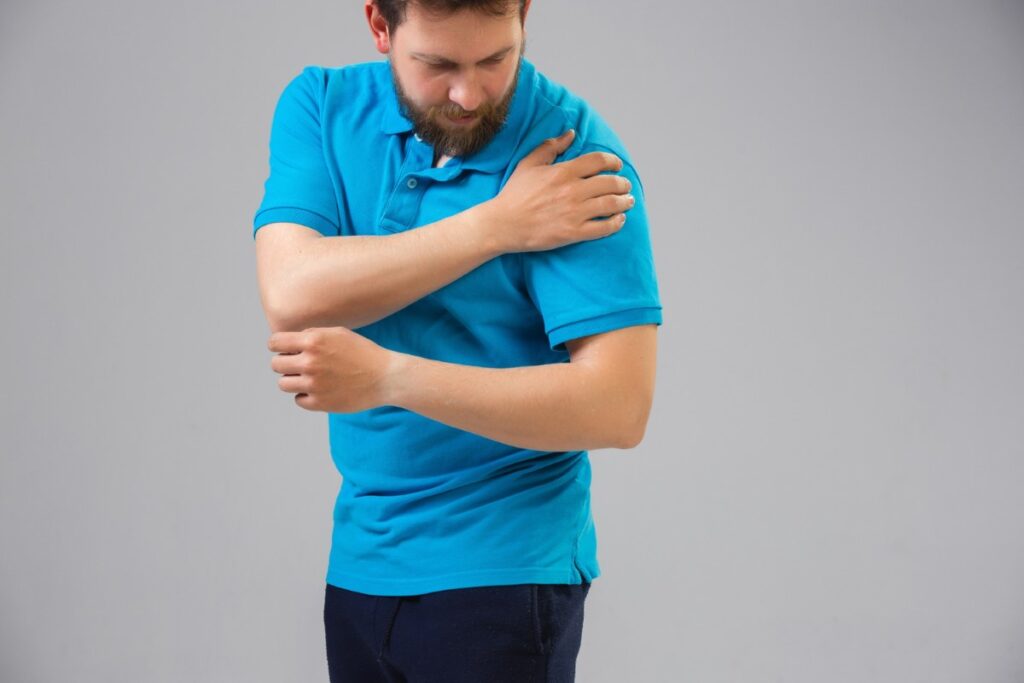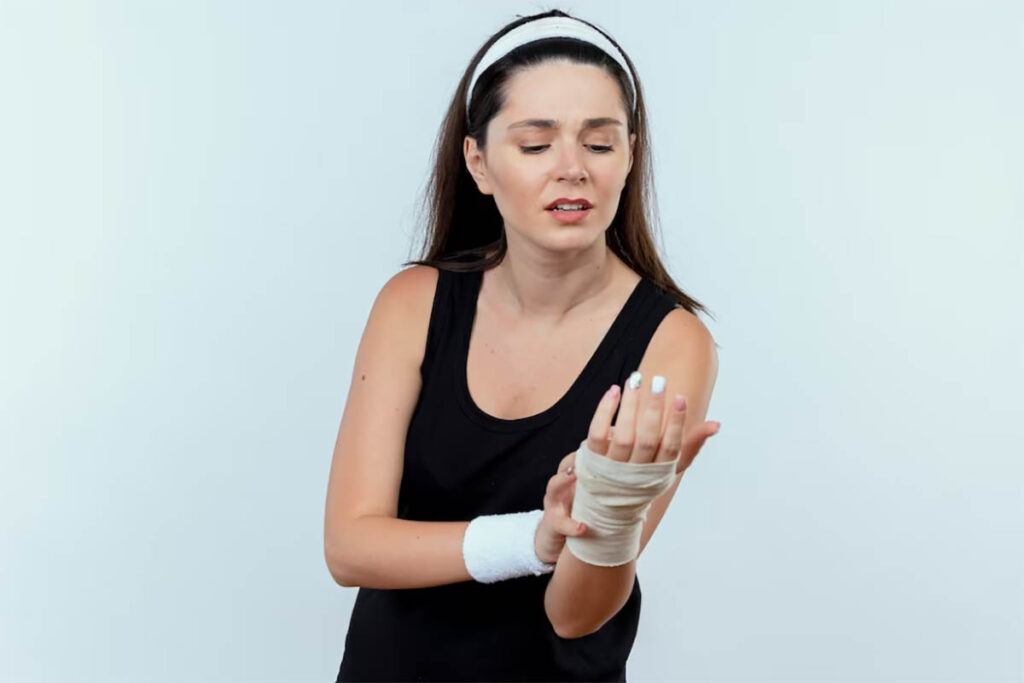Wrist and thumb pain can significantly impact daily life, making even simple tasks challenging. Whether you’re a professional using a keyboard all day, an athlete gripping sports equipment, or simply someone experiencing age-related joint changes, understanding the causes, treatment options, and prevention strategies for wrist and thumb pain is crucial for maintaining hand function and overall well-being. In this comprehensive, we will delve into the various causes of wrist and thumb pain, diagnostic approaches, effective treatment options, and preventive measures.
Table of Contents
- Introduction
- Anatomy of the Wrist and Thumb
- Common Causes of Wrist and Thumb Pain
- a. Repetitive Strain Injuries
- b. Osteoarthritis
- c. Carpal Tunnel Syndrome
- d. De Quervain’s Tenosynovitis
- Diagnosing Wrist and Thumb Pain
- a. Clinical Examination
- b. Imaging Studies
- c. Nerve Conduction Tests
- Treatment Options for Wrist and Thumb Pain
- a. Conservative Approaches
- b. Medications
- c. Physical Therapy
- d. Injections
- e. Surgical Interventions
- Preventing Wrist and Thumb Pain
- a. Ergonomics and Hand Care
- b. Exercises and Stretching
- c. Rest and Recovery
- d. Lifestyle Modifications
- Living with Wrist and Thumb Pain
- a. Coping Strategies
- b. Assistive Devices
- c. Emotional Well-being
- Conclusion
1. Introduction
Wrist and thumb pain can be debilitating, affecting your ability to work, perform daily activities, and enjoy hobbies. Whether you’re dealing with acute injuries, chronic conditions, or the wear and tear of daily life, understanding the root causes and effective management strategies is crucial for regaining hand function and improving your quality of life.
2. Anatomy of the Wrist and Thumb

Before we dive into the complexities of wrist and thumb pain, let’s briefly explore the anatomy of these critical hand structures:
- Wrist Joint: The wrist is a complex joint composed of multiple small bones called carpal bones, held together by ligaments. It connects the forearm to the hand and allows for a wide range of movements.
- Thumb Joint: The thumb contains two joints: the carpometacarpal joint at the base of the thumb (CMC joint) and the metacarpophalangeal joint (MP joint). These joints facilitate gripping and pinching motions.
- Muscles and Tendons: Numerous muscles and tendons surround the wrist and thumb, enabling movements and providing stability.
3. Common Causes of Wrist and Thumb Pain
Wrist and thumb pain can arise from various sources. Let’s explore some of the most common causes:
a. Repetitive Strain Injuries
- Tendonitis: Inflammation of tendons due to repetitive motions, commonly affecting the wrist and thumb.
- Intersection Syndrome: Inflammation of tendons caused by repetitive wrist and thumb movements, often seen in activities like rowing.
b. Osteoarthritis
- Thumb Basal Joint Arthritis: Degeneration of the CMC joint at the base of the thumb, leading to pain, weakness, and limited thumb motion.
- Wrist Osteoarthritis: Degenerative changes in the wrist joint that can cause pain, stiffness, and decreased function.
c. Carpal Tunnel Syndrome
Compression of the median nerve in the wrist, leading to pain, numbness, and tingling in the thumb, index, and middle fingers.
d. De Quervain’s Tenosynovitis
Inflammation of the tendons on the thumb side of the wrist, resulting in pain, swelling, and difficulty gripping.
4. Diagnosing Wrist and Thumb Pain
Accurate diagnosis is critical for effective treatment. Healthcare providers use various methods to diagnose the underlying cause of wrist and thumb pain:
a. Clinical Examination
A thorough physical examination involves assessing pain location, range of motion, strength, and specific provocative tests to identify the source of pain.
b. Imaging Studies
Imaging tests such as X-rays, MRI scans, and ultrasound can provide detailed images of the wrist and thumb structures, aiding in the diagnosis of conditions like arthritis and ligament injuries.
c. Nerve Conduction Tests
For suspected nerve-related conditions like carpal tunnel syndrome, nerve conduction studies may be conducted to assess nerve function and identify areas of compression.
5. Treatment Options for Wrist and Thumb Pain

The treatment approach for wrist and thumb pain depends on the underlying cause and severity of the condition. Here are some common treatment options:
a. Conservative Approaches
- Rest and Activity Modification: Reducing or modifying activities that exacerbate symptoms can promote healing.
- Bracing or Splinting: Wrist and thumb splints or braces provide support and immobilization, reducing strain on injured structures.
- Physical Therapy: Physical therapists can design customized exercise programs to strengthen muscles, improve flexibility, and teach ergonomic techniques.
b. Medications
- Pain Relievers: Over-the-counter pain relievers like acetaminophen or nonsteroidal anti-inflammatory drugs (NSAIDs) can help manage pain and reduce inflammation.
- Topical Analgesics: Creams or gels containing NSAIDs can be applied directly to the affected area for localized pain relief.
c. Physical Therapy
Physical therapists play a crucial role in rehabilitating wrist and thumb injuries. They employ various techniques, including:
- Strengthening Exercises: Targeting specific muscle groups to improve joint stability and function.
- Manual Therapy: Hands-on techniques to improve joint mobility and reduce pain.
- Modalities: Such as heat, ice, ultrasound, or electrical stimulation to alleviate pain and inflammation.
d. Injections
- Corticosteroid Injections: These can provide temporary relief from pain and inflammation, often used for conditions like carpal tunnel syndrome or thumb arthritis.
- Platelet-Rich Plasma (PRP) Injections: PRP contains concentrated growth factors that may promote tissue healing and reduce pain.
e. Surgical Interventions
In cases where conservative treatments are ineffective, surgical options may be considered:
- Arthroscopy: A minimally invasive procedure using a small camera to diagnose and treat wrist and thumb joint issues.
- Joint Replacement: For advanced arthritis, joint replacement surgery may be recommended to relieve pain and restore function.
6. Preventing Wrist and Thumb Pain
Prevention is crucial for maintaining healthy wrists and thumbs. Here are some preventive strategies:
a. Ergonomics and Hand Care
- Proper Ergonomics: Ensure your workstation is ergonomically designed to reduce strain on the wrists and hands.
- Hand Care: Take regular breaks during repetitive tasks and perform hand and wrist stretches to maintain flexibility.
b. Exercises and Stretching
- Strengthening Exercises: Perform exercises that target the muscles of the wrist and thumb to improve stability.
- Stretching: Incorporate gentle stretching exercises to maintain flexibility and prevent muscle imbalances.
c. Rest and Recovery
Allow adequate rest between activities, particularly if you engage in repetitive hand movements or gripping activities.
d. Lifestyle Modifications
Maintain a healthy lifestyle by managing underlying medical conditions, staying hydrated, and maintaining a balanced diet to support overall joint health.
7. Living with Wrist and Thumb Pain
For some individuals, wrist and thumb pain may become a chronic condition. Coping strategies, assistive devices, and addressing emotional well-being are essential aspects of living with ongoing pain:
a. Coping Strategies
- Learn pain management techniques, such as relaxation exercises and mindfulness, to help cope with chronic pain.
- Consider seeking support from a pain management specialist or therapist to develop effective pain coping strategies.
b. Assistive Devices
- Use ergonomic tools and assistive devices to reduce strain on the wrists and thumbs during daily activities.
c. Emotional Well-being
- Address the psychological aspects of chronic pain through counseling or support groups, as chronic pain can have a significant impact on emotional well-being.
8. Conclusion
Wrist and thumb pain can be challenging to manage, but with the right knowledge and approach, you can effectively address these issues and regain hand function. Whether you’re dealing with acute injuries, chronic conditions like arthritis, or repetitive strain injuries, understanding the causes, seeking appropriate medical care, and implementing preventive measures are key to maintaining healthy wrists and thumbs. If you experience persistent or severe wrist and thumb pain, consult a healthcare professional for a thorough evaluation and personalized treatment plan. Remember that early intervention and a comprehensive approach to care can lead to better outcomes and an improved quality of life.



